 The life of a model: Not as glamorous as it seems
The life of a model: Not as glamorous as it seems
 Hello Kitty, happy 40th birthday!
Hello Kitty, happy 40th birthday!
 The Western Qing Mausoleum
The Western Qing Mausoleum
 Avant-garde approach to graduation photos
Avant-garde approach to graduation photos
 Early PLA posters, signatures of an era
Early PLA posters, signatures of an era
 First Russian Street in Tianjin open to public
First Russian Street in Tianjin open to public
 Motorcycle stunt on the Bund
Motorcycle stunt on the Bund
 French Spiderman Alain Robert climbs up Galaxy Hotel in Macao
French Spiderman Alain Robert climbs up Galaxy Hotel in Macao
 Africans in Guangzhou
Africans in Guangzhou
 Pole dancer shows strength and beauty up in the air
Pole dancer shows strength and beauty up in the air
 |
| Cheongsam feature colorful and delicate embroidery. (China Daily/Lyu Shuang) |
The New Photo Studio, which is located in Tianjin's downtown, attracts many young people who want to take wedding photos and fashion photo albums every day. However, on Saturday afternoon, a few old ladies walk into the studio.
With fine makeup, paper umbrellas and vintage high heels, they start practicing different gestures like hands on hips, looking down, turning around. Liu Jingchun, one of the ladies, has just celebrated her 70th birthday. Dressed in a white cheongsam, she strikes various elegant poses under the photographer's guidance.
The collective shooting was not quite a personal fashion album. They are participating in a special project called "Guohua-Global Chinese Cheongsam Image Giant Scroll".
Cheongsam, or qipao, the body-hugging one-piece dress, was often considered the quintessential national dress for Chinese women and popularized in the 1920s by daring activists, fashionable socialites and celebrities. After the founding of New China, it gradually faded away especially as modernization was battered in the period of the "cultural revolution" (1966-76).
Some worry the cheongsam will die out, but 50-year-old Liu Bing, a local TV host who co-owns the studio and initiated the project, is eager to promote Chinese cheongsam culture visually.
His interest in the cheongsam was inspired by the old photos of women wearing cheongsam which his grandfather, a former newspaper chief editor took.
He learned more old stories about cheongsam while working at the local TV station.

 Solar halo occurs in Lhasa
Solar halo occurs in Lhasa High fashion trend welcomed by costumers in Changsha
High fashion trend welcomed by costumers in Changsha 17 years' teaching life in a remote village in Qinghai
17 years' teaching life in a remote village in Qinghai Beautiful Chinese-built roads in Africa
Beautiful Chinese-built roads in Africa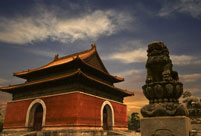 The Western Qing Mausoleum
The Western Qing Mausoleum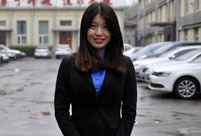 Overseas returnees strive for dreams in Beijing
Overseas returnees strive for dreams in Beijing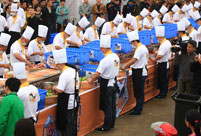 Fried up: Chili pork bonanza in Central China
Fried up: Chili pork bonanza in Central China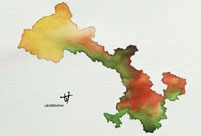 Hand-painted maps go viral online
Hand-painted maps go viral online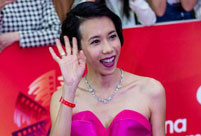 4th Beijing Int'l Film Festival ends
4th Beijing Int'l Film Festival ends 'African Street' in Guangzhou
'African Street' in Guangzhou Special operation members in comprehensive training
Special operation members in comprehensive training Cute Shaolin boy melts the hearts of millions
Cute Shaolin boy melts the hearts of millions Giant panda Sijia is back to happy life
Giant panda Sijia is back to happy life Richest Chinese of 2014: half from the mainland
Richest Chinese of 2014: half from the mainland Chengdu - laid-back lifestyle makes happiest city
Chengdu - laid-back lifestyle makes happiest cityDay|Week|Month